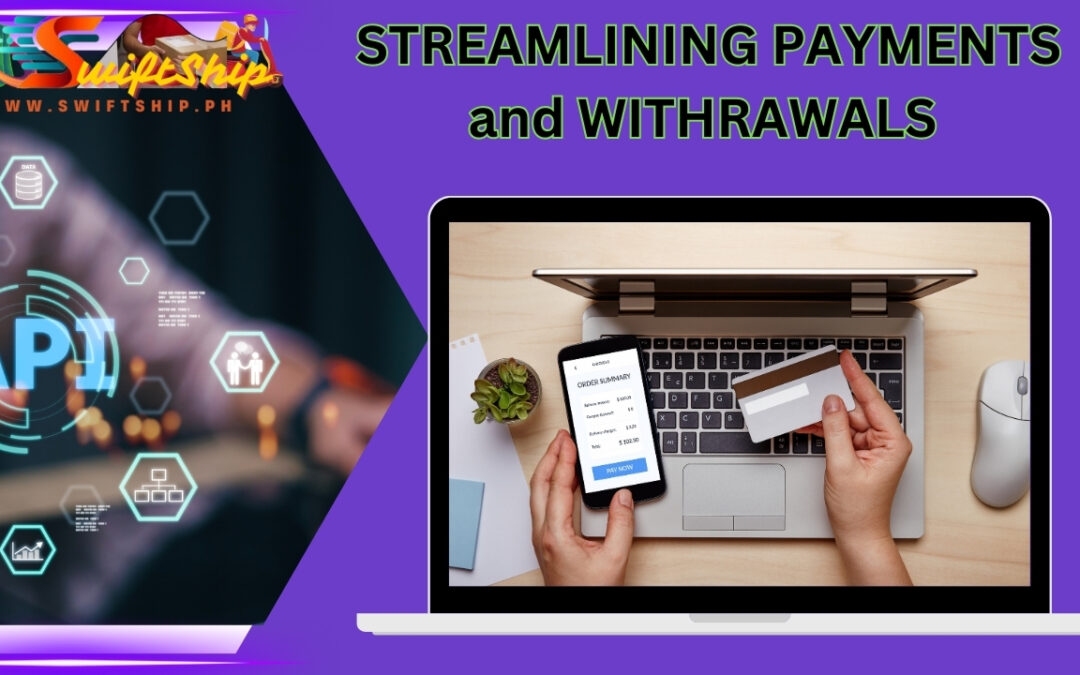Seatoo Delivers: Sellers Rejoice as Disbursements Hit Accounts
After days of eager anticipation, Seatoo Corporation finally released the much-awaited disbursements to its sellers on July 26, 2024. The online platform, which has been expanding its reach and services, had previously announced the introduction of new bank and financial partners to streamline the disbursement process. This update was met with a mix of excitement and apprehension from sellers who had been patiently waiting since Wednesday for the promised changes to take effect.
The afternoon of July 26 marked a turning point as Seatoo officially initiated the disbursement process. The news was disseminated through the company’s Facebook page and dedicated account specialists, sending ripples of joy and relief among the seller community. With the successful execution of this crucial step, Seatoo has demonstrated its commitment to its sellers and reassured them of its financial stability and reliability.
As the dust settles and sellers begin to receive their earnings, it will be interesting to observe the overall impact of the new disbursement system. Feedback from the seller base will undoubtedly be valuable for Seatoo as it continues to refine its operations and enhance the experience for its partners.
Announcement to All SellersGood day @everyone! We are pleased to inform you that our bank account has been successfully opened as of this morning. Our technical department is currently in the process of connecting with the bank’s API to conduct necessary withdrawal tests (Standard procedure).Upon the successful completion of these tests, we will proceed with batch withdrawals for all sellers. Additionally, we will be issuing a new disbursement plan/disbursement table to further streamline our payment processes. Rest assure that the company will make it up to you with regards to the delays, the disbursement department and the rest of the company is doing what they can to further service all the clients.We appreciate your patience and understanding as we work to enhance our financial operations. Stay tuned for further updates!Best regards,Seataoo Team
An API (Application Programming Interface) in e-commerce platforms like Seatoo, Shopee, Lazada, TikTok Shop, and SwiftShip.ph is a set of rules and protocols that allows different software applications to communicate with each other. In the context of e-commerce, APIs enable various functionalities that are crucial for the seamless operation of online stores. Here’s a breakdown of how APIs are used in these platforms:
Key Uses of APIs in E-Commerce Platforms:
- Product Management: APIs allow sellers to manage their product listings efficiently. They can add, update, or delete products, manage inventory, and synchronize product data across multiple channels. This ensures that information is consistent and up-to-date across all platforms.
- Order Management: Through APIs, sellers can access order information, update order statuses, process returns, and track shipments. This integration helps in automating the order fulfillment process, reducing manual effort, and improving accuracy.
- Payment Processing: Payment APIs facilitate secure transactions between buyers and sellers. They enable the integration of various payment gateways, allowing customers to choose their preferred payment methods and ensuring the smooth processing of payments.
- Customer Relationship Management (CRM): APIs can integrate with CRM systems to help manage customer data, track customer interactions, and provide personalized experiences. This data can be used to enhance customer service and marketing efforts.
- Shipping and Logistics: Shipping APIs enable integration with logistics providers, allowing for real-time tracking of shipments, automated shipping label generation, and calculation of shipping costs. This improves the efficiency of the shipping process and enhances customer satisfaction.
- Analytics and Reporting: APIs provide access to various data points and metrics that can be used for analytics and reporting. Sellers can track sales performance, customer behavior, and other key metrics to make informed business decisions.
- Marketing and Advertising: Marketing APIs help in integrating with advertising platforms, enabling automated ad placements, tracking ad performance, and managing marketing campaigns. This helps sellers in reaching a wider audience and optimizing their marketing efforts.
Examples of E-Commerce APIs:
- Seatoo API: Seatoo’s API allows sellers to integrate their stores with Seatoo’s platform, managing products, orders, payments, and more through a streamlined interface.
- Shopee API: Shopee’s API provides functionalities for product management, order processing, logistics, and data analytics, helping sellers to automate and enhance their online business operations.
- Lazada API: Lazada’s API enables sellers to manage their product catalog, handle orders, track shipments, and access detailed sales reports, making it easier to run their e-commerce business.
- TikTok Shop API: The TikTok Shop API allows sellers to list products, manage orders, and integrate with TikTok’s social commerce features, leveraging the platform’s vast user base for sales.
- SwiftShip.ph API: SwiftShip.ph’s API offers functionalities for inventory management, order processing, shipping integration, and customer management, providing a comprehensive solution for e-commerce operations.
In summary, APIs are essential tools in the e-commerce ecosystem, facilitating seamless integration, automation, and enhancement of various business processes, ultimately leading to a more efficient and user-friendly experience for both sellers and buyers.
Seataoo’s Milestone: Official Bank Account Opening and API Integration
Today marks a significant milestone for all Seataoo sellers. Our continuous efforts to streamline financial operations took a giant leap forward with the opening of our official bank account this morning. This development is more than just a checkmark on our to-do list; it is a foundational step that will bolster our ability to support you, our valued partners, in a more efficient and reliable manner. Our technical team, the unsung heroes behind the scenes, is now diligently working to pair our system with the bank’s API. This isn’t merely a technical handshake between our systems; it is a move that promises to reshape the way you receive payments. The API, or Application Programming Interface, is a digital key that will unlock a vault of benefits – from enhanced security to real-time transaction capabilities.
However, before we celebrate the full range of advantages, there is a critical stage we must navigate: withdrawal tests. These tests are not just a formality; they are an essential component of ensuring the system is rock solid and ready to manage your financial transactions without a hiccup. It’s our way of double-checking every drawer and door before we hand over the keys. Upon the successful completion of these rigorous tests, we will be ready to deploy batch withdrawals – a system that will make funds flow into your accounts with speed and precision.
So, stay tuned, and I’ll be bringing you the specifics on how our fresh financial setup, thanks to the bank account and API integration, will lead into the advent of batch withdrawals. This upcoming enhancement is poised to significantly improve your experience as a Seataoo seller, ensuring that your financial transactions are seamless, secure, and swift.
Streamlining Payments: The Launch of Seataoo’s Batch Withdrawals
Seataoo’s introduction of batch withdrawals is a significant step forward for all participating sellers. Batch withdrawals are a banking process where multiple transactions are bundled and processed at once. This approach is beneficial for both Seataoo and its sellers, as it simplifies the accounting workload and accelerates the payout process, ensuring that sellers receive their funds in a timely manner.
After completing the necessary withdrawal tests, Seataoo plans to swiftly implement batch withdrawals. The precise timetable will be communicated to sellers once testing confirms a reliable connection with the bank’s API. This ensures that the transition to the new system is smooth and interruptions to payment schedules are minimized. Such a system change may raise questions among sellers regarding the reliability and timing of their payments. We understand this concern and want to highlight that Seataoo’s new withdrawal method aims to create a more predictable and consistent payment schedule. The robust API connection will provide real-time updates and transparent transactions, offering peace of mind to sellers about the status of their funds.
The rollout of batch withdrawals marks an important moment for Seataoo’s financial dealings. It speaks to the company’s dedication to employing innovative banking technology, which ultimately translates to better service for the sellers. By optimizing the disbursement process, Seataoo is positioning itself and its community of sellers for greater operational efficiency and financial success. This advancement not only enhances the user experience but also solidifies Seataoo’s commitment to supporting its sellers with cutting-edge financial solutions.
APIs in Banking: The Gateway to Efficient Disbursements for Seataoo
As a Seataoo seller, efficient, reliable, and secure financial transactions are paramount for the continued success of your business. That’s why the company’s integration of API technology into banking practices isn’t just a technical upgrade; it’s a pivotal moment that reflects a commitment to your well-being and the smooth functioning of the marketplace. APIs represent a bridge between Seataoo’s operators and the bank, ensuring that your hard-earned money is transferred to you with the precision and velocity that today’s digital age demands. By automating payments, facilitating real-time transactions, and integrating with various third-party service providers, these APIs aren’t just conduits for urgency; they’re the very veins of a robust financial body keeping the lifeblood of commerce flowing.
Beyond the surface, the encrypted tunnels of these APIs also stand guard over the security of every transaction. Each transfer you initiate is armored against threats, bolstered by the highest standards of security that come with API integration. Moreover, these systems help Seataoo stay aligned with strict regulatory requirements, offering you not just transparency but the reassurance that everything is accounted for, auditable, and above board.
This technological stride comes with a customer experience that’s poised to be unrivaled. Imagine instant fund transfers, detailed tracking, and an interface that seamlessly meshes with your financial tools—this is the sophistication that’s on the horizon. In closing, as Seataoo forges ahead with the implementation of API-based banking, your patience and understanding during this transformative period are genuinely appreciated. With this advancement, expect not just a remedy for past delays but a dawn of streamlined operations designed to sustain and grow your businesses. The future of Seataoo’s financial operations is bright, and as sellers, you are the heartbeat of this progress. Together, let’s look forward to a system that works smarter and harder for all of us.






